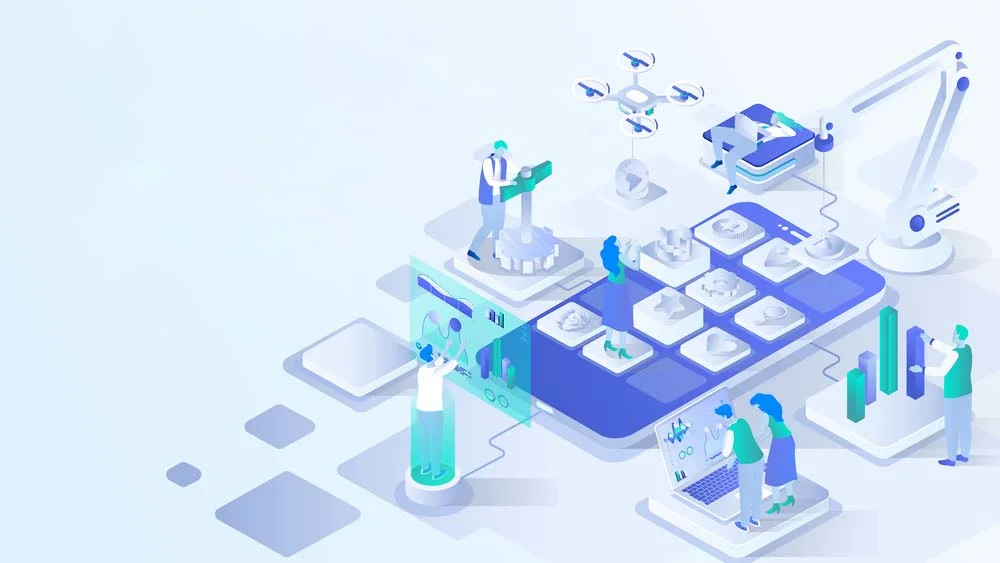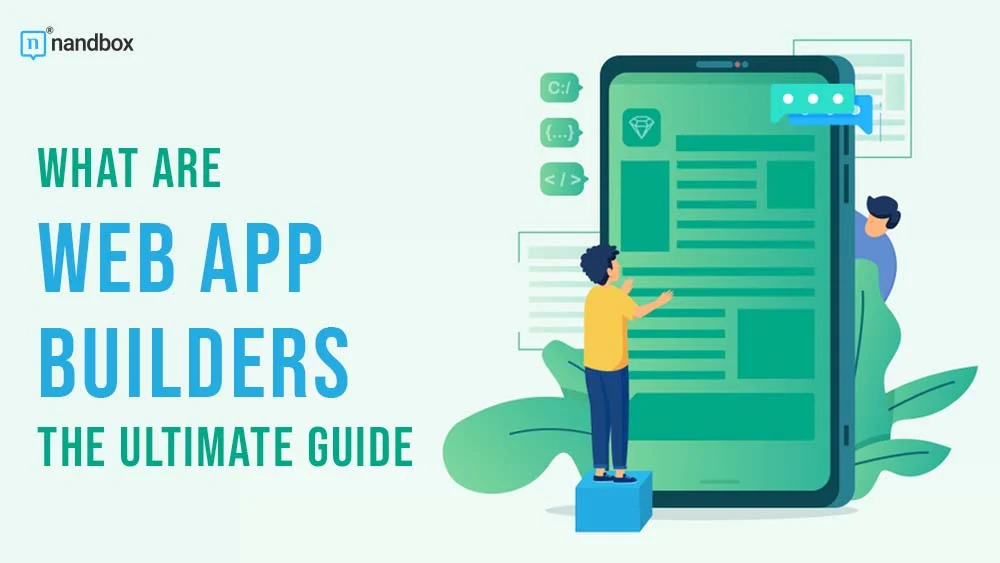Web App Builders: An All You Need to Know Guide
There is a digital revolution that is being caused in today’s landscape. One that is occurring in the area of application development is the methods you use to go through such a process. The no-code movement has also had its own impact on developers and app development in general. Today’s guide will discuss what web app builders are. An app development tool that will help you create web applications. The way in which you actually use them is in a very streamlined way that is easier than you think. We’re looking here at an intuitive platform, or platforms in plural, that provides a user-friendly app development ecosystem. One where users can design, develop, and initiate their web apps.
The development process can be simplified with the use of web app builders. Which provide a variety of pre-built components, widgets, and templates to choose from. Through the process of expanding the creation of applications, these tools make technology available to a wider audience. Which in turn encourages creativity and quickens the speed of digital advancement. Learn about the world of web app builders. Additionally, how to transform your ideas into online experiences that are both useful and visually appealing using the internet. Delve deeper into this topic with me and get to understand all about these platforms that are revolutionizing the world of app creation.
Web Applications: A Quick Explanation of This Little Innovation
A dynamic software program that can be seen online or electronically is what we call a web application. That is, through the utilization of a web browser, which is connected to the internet, is referred to as a web application, which is also referred to as a web app. Instead of being installed on the user’s physical device, web applications are hosted on remote servers. This is in contrast to traditional desktop software, which requires the user to install the software on their own computer.
They employ a client-server design, in which the user interacts with the user interface of the program by means of a web browser, while the server is responsible for processing and storing data. In this architecture approach, the user interacts with the program. On the other hand, web applications contain a broad variety of functionalities, ranging from simple activities like email and online forms to more complicated applications like social networking platforms and websites that support online shopping. Web applications can be broken down into two categories: simple and complex.
The key characteristics of web applications include accessibility from any device with a web browser and internet connection, platform independence, and automatic updates, as users always access the latest version. They often incorporate a combination of technologies such as HTML, CSS, and JavaScript for the frontend, while the backend involves server-side scripting languages and databases. Web applications enable seamless collaboration, real-time updates, and data storage in the cloud, enhancing scalability and flexibility. As a result, they have become integral to various industries, facilitating efficient communication, productivity, and user engagement on a global scale.
How Does a Web Application Work? The Process and Steps
For the purpose of providing users with content that is both dynamic and interactive, a web application functions by means of a methodical procedure that involves a number of steps. Accessing the application through a web browser is the first step in the procedure, which allows the user to commence the process. The web server that is hosting the application receives a request from the browser, which specifies the action or material that is required. The web server processes this request and then interacts with the application’s server-side logic. This logic may entail database queries, the execution of business logic, or other actions. Following this, the server will produce a response, which will normally be delivered back to the user’s browser in the form of HTML, CSS, or JavaScript, depending on the circumstances.
Following the receipt of the response, the browser renders the content, displaying the web application’s user interface and functionality. Interactions with users result in further requests and responses, which makes it possible to provide a user experience that is both dynamic and responsive. Throughout the entirety of this process, a number of different technologies, including web servers, application servers, and databases, work together to deliver the information that has been requested in a smooth manner. Users are able to interact with and consume services or content over the internet in a manner that is both structured and efficient because of the client-server interaction that forms the backbone of web applications.
Web App Builders: Validation and Deployment
What do I mean by this? Let me tell you. When you’re developing web applications, there are two phases that are of great importance. These two are validation and deployment. They are simply a critical stage in the software development lifecycle, involving methods that guarantee the dependability, functionality, and effective delivery of a web application. Validation entails a thorough examination to detect and address possible problems, such as software defects, security weaknesses, and performance limitations.
This phase guarantees that the web application fulfills the given requirements and provides a smooth user experience. Deployment refers to the process of releasing the application into a live environment, enabling users to access it. To minimize downtime and any disruptions, this procedure necessitates meticulous planning, version control, and cooperation. It includes tasks such as server configuration, database setup, and security implementation.
Efficient validation and deployment procedures are crucial for achieving success in web application development. These strategies ensure the creation of a strong and dependable final product that fulfills user expectations while also prioritizing security and optimal performance.
The Top Web App Builders In The Market of 2024

If you’re developing a web app, it is important that you become aware of the top web app builders of 2024. Staying updated is of the essence and that is why this paragraph exists in this guide. You can find a brief list of the top three web app builders in the market today below.
- Bubble: This is a no-code app builder that offers web services such as web app development. With an easy drag-and-drop interface, Bubble is famous among the top web app builders that people love to use. That is because of its ease of use and the unlimited features that you find yourself provided with when it comes to Bubble’s app development process.
- Softr: This is a powerful tool for web app developers, offering a user-friendly interface that simplifies the development process. With its no-code approach, Softr enables developers to create sophisticated web applications without extensive coding, saving time and resources. Its intuitive features, customizable templates, and seamless deployment options make it a valuable asset for efficient and streamlined web app development.
- Webflow: Webflow stands out as a powerful web design and development platform, offering a visual interface that simplifies the creation of responsive and visually stunning websites without extensive coding. Beneficial for web app developers, it streamlines the design-to-deployment process, providing a collaborative environment, robust hosting, and the flexibility to implement complex interactions effortlessly.
The Benefits of Creating Your Own Web Application
Building your own web app has several advantages, including allowing companies and individuals to customize solutions to their own needs. In the first place, personalization is king, so you may make an app that fits your goals and dreams. In doing so, you strengthen your brand’s identity while creating a unique customer experience. Since you may decide how to divide up your resources and pick scalable solutions that go with your budget, it follows that it will be cost-effective. Moreover, in the modern digital world, ownership also guarantees control and security of data. Web apps are great because users can access them easily from any device, which increases engagement.
Fast updates and deployment are also within your reach, so you can respond rapidly to shifts in the market or user preferences. Due to their network architecture, web apps are easy to integrate with third-party services, allowing for the expansion of functionality without extensive programming. You can learn a lot about user behavior with analytics tools, which can help you enhance your product over time. Development teams are better able to work together in cloud-based development environments because of how easy it is to collaborate. The ability to create your own web app gives you independence, adaptability, and efficiency; it also gives you a leg up in the increasingly competitive digital landscape by allowing you to tailor your technological solutions to your specific business needs.
Final Thoughts!
To sum up, web app builders level the playing field in terms of developer accessibility. They have become platforms that facilitate the whole development process for citizen developers. Additionally, it facilitates it all for people in general who wish to create an app or a web app. These tools make it easy for individuals and organizations to turn their ideas into functioning applications. They are simple, cost-effective, and you can deploy them quickly. Web app builders are pushing the limits of software creation and app development. Taking them to new heights with their intuitive interfaces and personalization possibilities. Something that is opening up technology to more people and speeding up innovation in the digital world.






